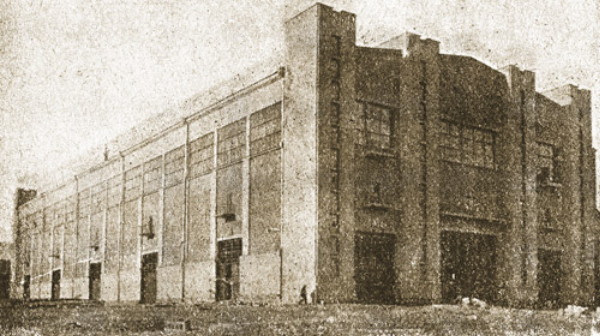All-Ukrainian Photo-Cinema Administration
All-Ukrainian Photo-Cinema Administration (Всеукраїнське фото-кіноуправління; Vseukrainske foto-kinoupravlinnia or ВУФКУ; VUFKU). A state monopoly established by the People's Commissariat of Education on 13 March 1922 to oversee film production, control, and distribution in the Ukrainian SSR. Film production was based initially on the nationalized private ateliers in Odesa and Yalta, which were transformed into film studios (see Odesa Artistic Film Studio). In 1924 a state cinematography tekhnikum was opened in Odesa (transferred in 1930 to Kyiv as an institute). The large Kyiv Artistic Film Studio was opened in 1928.
Film production got off to a slow start, owing to lack of equipment and qualified personnel. The first feature film produced was Les Kurbas’s Shveds’kyi sirnyk (The Swedish Match, 1922). By the mid-1920s, however, VUFKU was producing an average of 20–25 artistic films per year, in addition to many more educational and propaganda films. The first Ukrainian film shown abroad, Ukraziia, was produced in 1925. Between 1922 and 1929 VUFKU produced 129 full-length films. In 1928 its capital was worth over six million rubles. By 1928 VUFKU managed 2,136 theaters and mobile cinemas and had exported about 30 films abroad.
VUFKU employed many prominent cultural figures: the directors V. Gardin, Heorhii Tasin, V. Pudovkin, Dziga Vertov, Marko Tereshchenko, Les Kurbas, Oleksander Dovzhenko, Yurii Stabovy, Petr Chardynin, and Ivan Kavaleridze; the writers Mykola Bazhan, Yurii Yanovsky, Oles Dosvitnii, Oleksander Korniichuk, Myroslav Irchan, Geo Shkurupii, Dmytro Buzko, Vladimir Maiakovsky, Dmytro Falkivsky, and Isaak Babel; the actors Amvrosii Buchma, Mariia Zankovetska, Ivan Zamychkovsky, Mykola Nademsky, Valentyna Chystiakova, Valerii Hakkebush, Nataliia Uzhvii, Mykola Sadovsky, Marian Krushelnytsky, and Yurii Shumsky; cinematographer Danylo Demutsky; and the artists (set designers) Vasyl H. Krychevsky, Vasyl V. Krychevsky, and Mylitsa Symashkevych.
VUFKU played an important cultural and educational role in the 1920s. From 1925 it published Kino, a monthly avant-garde film journal that reported on foreign films and experiments and had foreign contributors, and the weekly film chronicle Kinotyzhden’. VUFKU produced the first Ukrainian sound film, Dziga Vertov’s Symphony of the Donbas (Enthusiasm), in 1930. In that same year VUFKU’s name was changed to Ukrainfilm, and the monopoly, which had taken greater chances on unknown artists and experimental projects than other Soviet studios throughout the 1920s, came under increasing control of the central authorities in Moscow and the dictates of socialist realism.
Roman Senkus
[This article originally appeared in the Encyclopedia of Ukraine, vol. 1 (1984).]

.jpg)